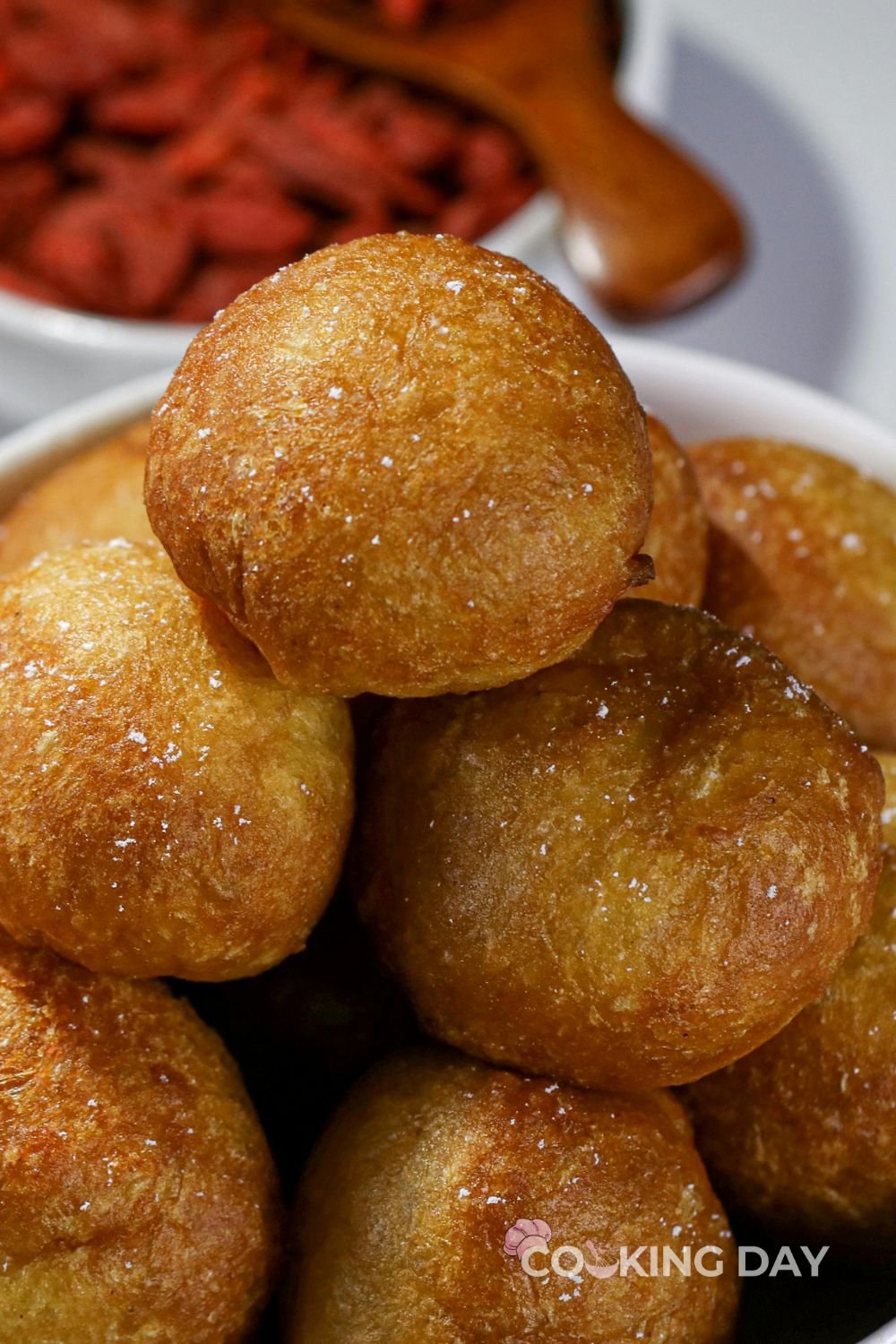Some links on this page are affiliate links. This means we may earn a commission at no additional cost to you if you click through and make a purchase, you can check our Affiliate Disclosure. Thank you for your support!
How to Make Authentic Ghanaian Bofrot? Imagine stepping into a warm, bustling kitchen where the air is filled with the sweet aroma of baking, a hint of pineapple, and the joyous chatter of a family gathering. Today, we’re embarking on a delightful culinary journey to Ghana with a recipe that’s close to the heart of many: Bofrot, or as some might fondly call it, Puff Puff. But this isn’t just any Bofrot recipe; it’s a dry version that promises fluffiness and taste without the use of eggs, making it a unique variant of a beloved classic. So, grab your apron, and let’s dive into the world of Bofrot, exploring its origins, health benefits, cultural significance, and of course, why it’s going to become your new favorite treat.
Origin: A Taste of Ghana
Bofrot, a beloved street food in Ghana, is the West African answer to doughnuts. Its origins are as humble as they are heartwarming, often found in morning markets and roadside stalls, providing a sweet start to the day for many Ghanaians. Unlike its Western counterpart, Bofrot is traditionally made with flour, sugar, yeast, and a hint of spice from nutmeg or extracts, then deep-fried to golden perfection. It’s a testament to the simplicity and richness of Ghanaian cuisine, offering a bite of comfort and nostalgia with every puff.
Health Benefits: Beyond the Sugar
While Bofrot is admittedly a treat (with its fair share of sugar and being deep-fried), it also has aspects that can be seen in a positive light. For starters, the use of pineapple extract not only adds a unique flavor but also introduces a touch of vitamin C. Moreover, opting for the dry version without eggs makes it a tad lighter and accessible to those with egg allergies. When enjoyed in moderation, Bofrot can be a delightful addition to a balanced diet, especially when paired with a side of fruit or a refreshing beverage.
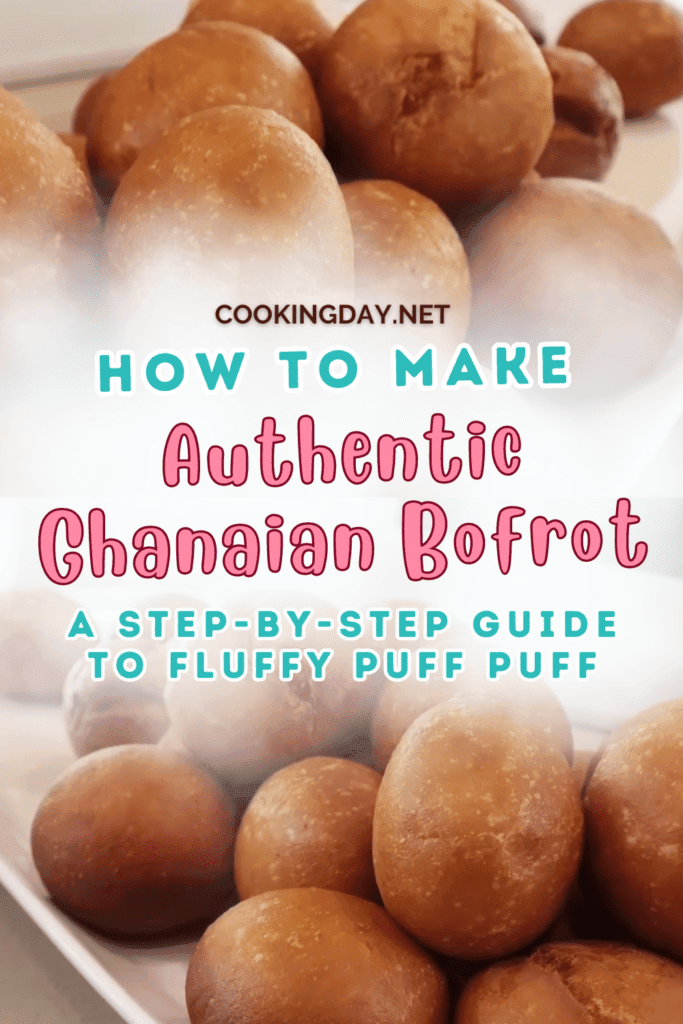
Culture: A Symbol of Hospitality
In Ghana, food is more than sustenance; it’s a language of love, community, and hospitality. Bofrot is often shared during gatherings, celebrations, and as a treat among friends and family. Its preparation is a communal activity, with each batch telling a story of togetherness and culinary tradition. Serving Bofrot to guests is a gesture of welcome, symbolizing the warmth and generosity inherent in Ghanaian culture.
Why You’ll Love It: Fluffy, Sweet, and Uniquely Delicious
The magic of Bofrot lies in its texture and taste—a crispy exterior with a soft, airy inside, sweetened just right, and infused with the warmth of nutmeg or the tropical essence of pineapple. It’s versatile, too; enjoy it as a snack with coffee in the morning, or as a dessert after a meal. Plus, the dry version we’re exploring allows for a slightly crunchier texture, making it even more irresistible.
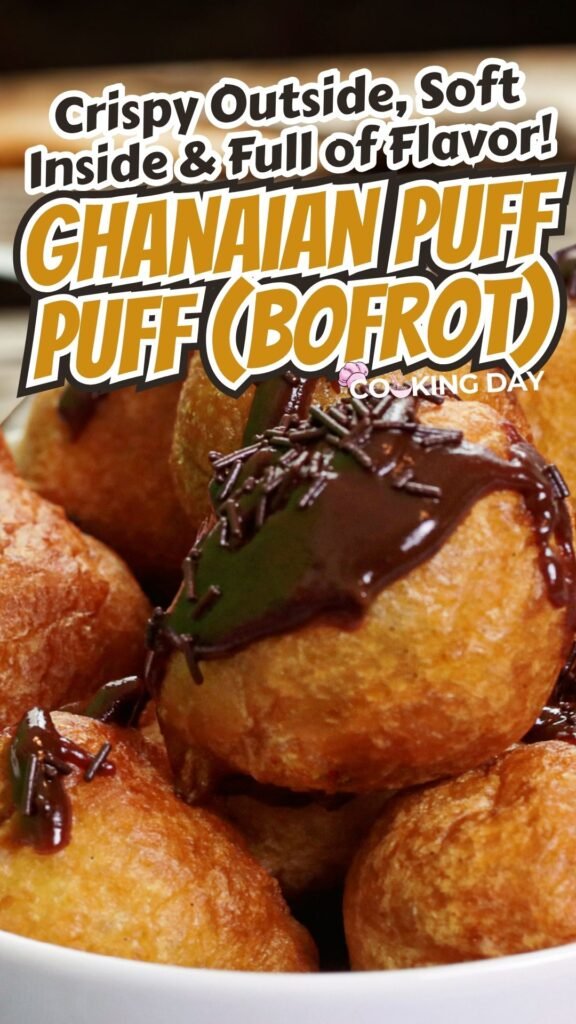
Let’s Get Cooking: Your Guide to Perfect Bofrot
Ingredients Overview:
Bread Flour (or your choice): 5 cups / 775 g
Bread flour is ideal because of its higher protein content, which helps create a chewy, airy texture. If you use all-purpose flour, it will yield a slightly softer dough.
Sugar: 1/2 cup / 75 g
Sugar not only adds sweetness but also helps feed the yeast during the proofing stage, aiding in the dough’s rise.
Powdered Milk: 1 cup
Powdered milk enhances the flavor and richness of the dough, giving it a subtle creaminess and contributing to a tender texture.
Nutmeg: 1/4 tsp
Nutmeg adds a warm, slightly spicy note to the dough, enhancing the overall flavor with a hint of complexity.
Yeast: 1 tbsp
Yeast is the leavening agent that makes the dough rise by producing carbon dioxide during fermentation, which creates lightness and volume.
Salt: 1 tsp
Salt is essential for balancing the sweetness and improving the overall flavor of the dough. It also helps control yeast activity.
Melted Butter: 1/4 cup / 60 ml
Butter adds richness, flavor, and tenderness to the dough. It helps keep the dough soft and moist.
Baking Powder (optional): 1/2 tbsp
Baking powder acts as an additional leavening agent to give the dough a lighter texture. It’s optional because the yeast is the primary leavener.
Pineapple Extract (or vanilla/almond extract): 1/2 tsp
Pineapple extract gives the dough a tropical, fruity note. Alternatively, vanilla or almond extract can add a more traditional flavor.
Room Temperature Water: 2 cups / 480 ml
Water hydrates the dough, making it come together. The amount of water can vary slightly depending on the flour used, so adjust as needed to achieve the right dough consistency.
The Process:
Prep the Yeast:
Mix yeast with a little sugar and warm water. Let it sit until frothy—this means it’s alive and ready!
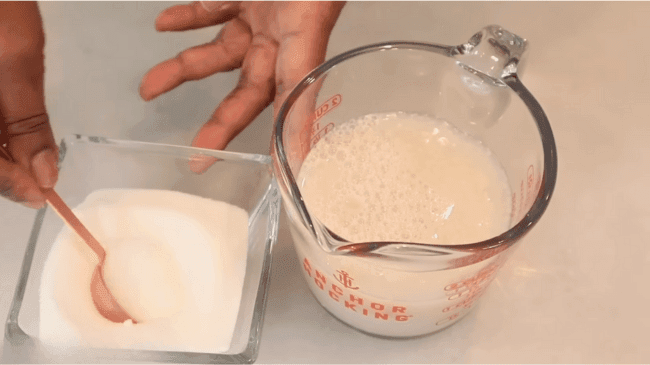
This step activates the yeast, ensuring it’s alive and ready to make the dough rise. The sugar feeds the yeast, and the warm water (not too hot) creates an environment for the yeast to become active. If the mixture becomes frothy or bubbly, it’s ready to use.
Mix Dry Ingredients:
Combine flour, sugar, powdered milk, nutmeg, and baking powder (if using).
Sift together all the dry ingredients to ensure they are evenly distributed. The powdered milk and baking powder (if using) help create a tender, airy texture in the final product, while nutmeg adds a touch of spice.
Combine Wet and Dry:
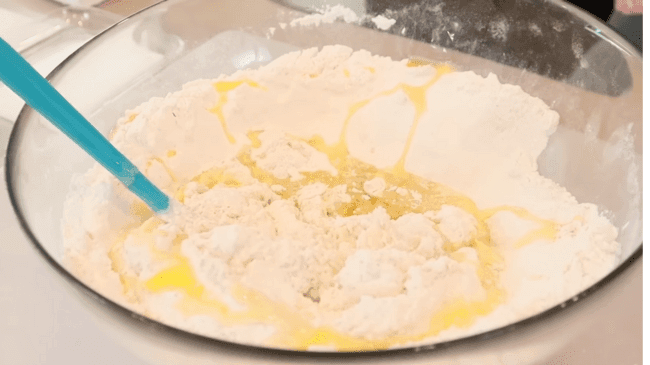
Make a well in the dry ingredients, pour in the yeast mixture, melted butter, and water. Mix to a sticky dough consistency.
Create a “well” in the center of your dry ingredients, then pour in the wet ingredients (yeast mixture, butter, and water). Start mixing from the center outward, gradually incorporating the dry ingredients into the wet ones. The dough should be sticky, meaning it clings to your hands or spoon slightly but still holds together.
Knead and Proof:
Knead the dough until smooth, then let it rise until doubled in size.
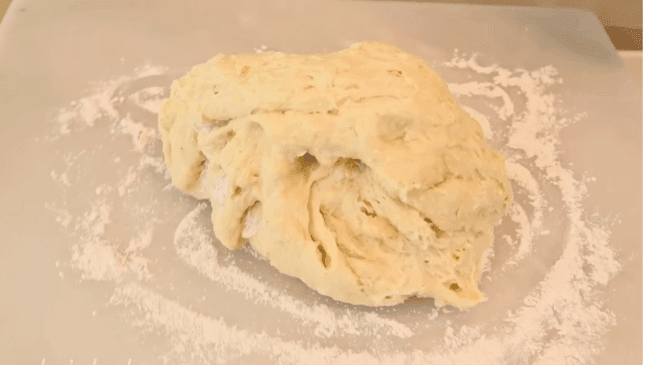
Kneading develops the gluten in the flour, giving the dough its structure and elasticity. After kneading, place the dough in a warm, draft-free spot, covering it with a damp cloth or plastic wrap. Let it proof (rise) until it has doubled in size, typically 1-2 hours. This process makes the dough light and airy.
Shape and Fry:
Shape the dough into small balls and fry them in medium-hot oil until golden brown.
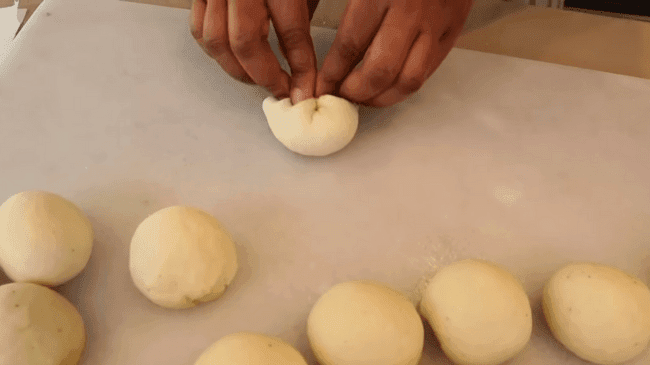
After proofing, punch down the dough to release any air bubbles and then shape it into small balls (or any preferred shape).
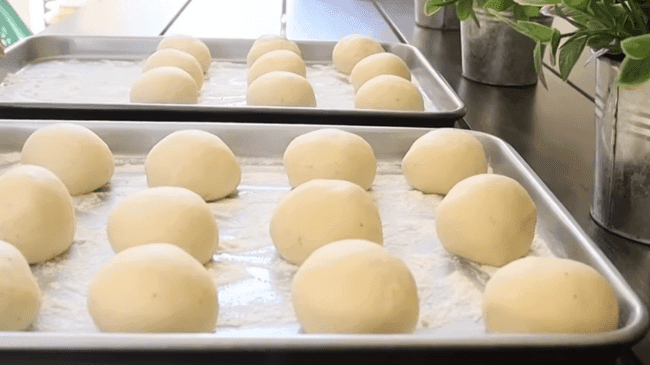
Heat oil to medium-hot (around 170-180°C or 340-360°F), and carefully place the dough balls in the oil. Fry until they are golden brown on all sides, turning them regularly to ensure even cooking.
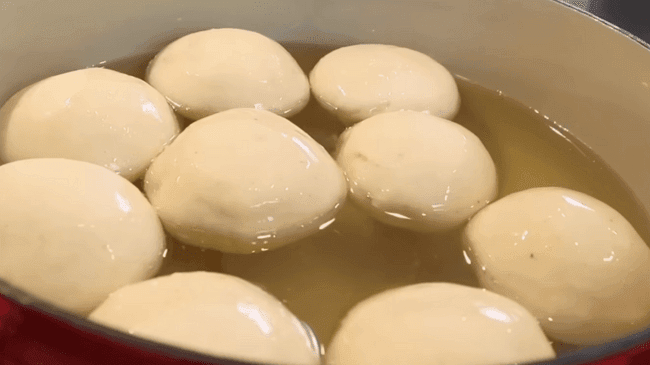
The dough should puff up nicely during frying, creating a crisp exterior and soft, airy interior.
A Little Bit of Fun:
Imagine these golden puffs, crackling as they fry, turning into beautiful, golden orbs of deliciousness. The first bite is crunchy, followed by a soft, cloud-like interior that melts in your mouth. Whether you flavor them with pineapple, vanilla, or almond extract, each bite takes you on a mini vacation to the streets of Accra.
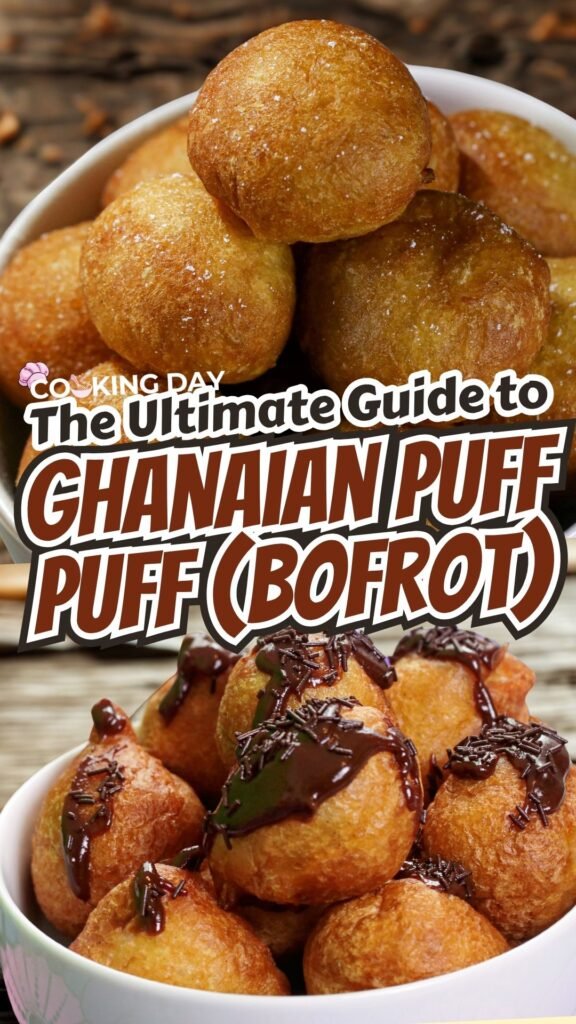
ALSO READ:Discovering Comfort in Every Bite: A Simple Samp Recipe
Wrapping Up:
Making Bofrot is more than just cooking; it’s an act of love and a celebration of culture. It’s about bringing a piece of Ghana to your kitchen, sharing stories, and making memories. So next time you’re in the mood for something sweet, why not take a culinary adventure with this beloved Ghanaian treat? Your taste buds (and family) will thank you. Happy cooking, and as they say in Ghana, “Akwaaba” (welcome) to the delicious side of life!
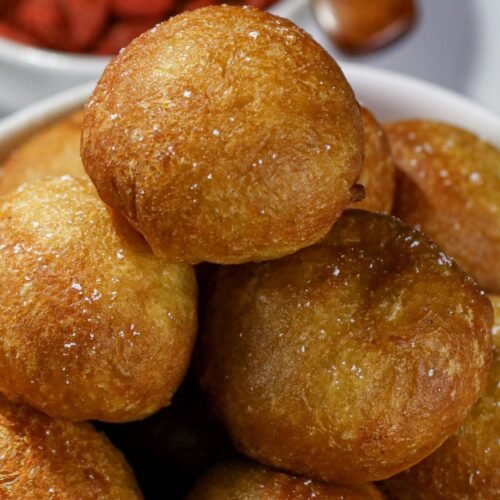
Authentic Ghanaian Bofrot: A Step-by-Step Guide to Fluffy Puff Puff
Equipment
- Large mixing bowl
- Deep fryer or large pot for frying
- Measuring cups and spoons
- Wooden spoon for mixing
- Frying spoon for turning the dough and draining oil
Ingredients
- Bread Flour: 5 cups 775g
- Sugar: 1/2 cup 75g
- Powdered Milk: 1 cup
- Nutmeg: 1/4 tsp
- Yeast: 1 tbsp
- Salt: 1 tsp
- Melted Butter: 1/4 cup 60ml
- Baking Powder optional: 1/2 tbsp
- Pineapple Extract or vanilla/almond extract: 1/2 tsp
- Room Temperature Water: 2 cups 480ml
Instructions
- Prepare the Yeast:Mix 1 tbsp of yeast with a little sugar and warm water.Let it sit for 5-10 minutes until it becomes frothy, indicating the yeast is active.
- Mix Dry Ingredients:In a large bowl, combine 5 cups of bread flour, 1/2 cup of sugar, 1 cup of powdered milk, 1/4 tsp of nutmeg, and 1/2 tbsp of baking powder (if using). Stir to evenly distribute the ingredients.
- Combine Wet Ingredients:Make a well in the center of the dry ingredients. Add the yeast mixture, 1/4 cup of melted butter, and 1/2 tsp of pineapple (or vanilla/almond) extract.
- Add Water Gradually:Slowly pour in 2 cups of room temperature water while mixing the dough until it reaches a sticky consistency.
- Knead and Proof:Knead the dough gently for 5-7 minutes until smooth.Cover the bowl with a damp cloth and let the dough rise in a warm place for 1-1.5 hours, or until it doubles in size.
- Shape and Fry:After the dough has risen, heat oil in a deep fryer or large pot to medium heat.Shape the dough into small balls (about the size of a golf ball) and gently drop them into the hot oil.Fry the Bofrot, turning them frequently to ensure even browning, until they are golden brown and crispy on the outside (about 5-6 minutes).
- Drain and Serve:Once golden, remove the Bofrot from the oil and place them on paper towels to drain any excess oil.Serve warm and enjoy!
Notes
- Flavor Variations: Experiment with different extracts such as vanilla, almond, or even citrus zest for a unique twist.
- Yeast Activation Tip: Ensure your yeast mixture is frothy before adding it to the dry ingredients; otherwise, your Bofrot may not rise properly.
- Frying Temperature: Keep the oil at a medium temperature to avoid burning the outside while leaving the inside uncooked.
- Storage: Bofrot is best enjoyed fresh, but it can be stored in an airtight container at room temperature for up to two days.

